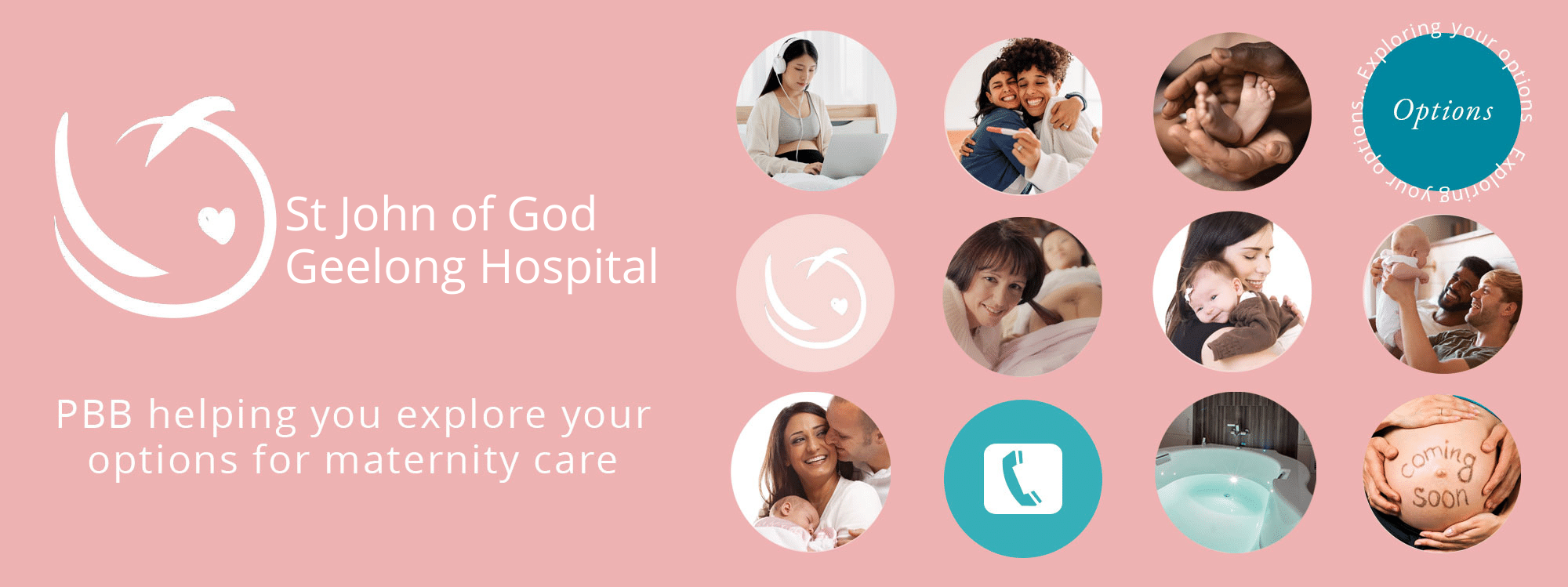
St John of God Geelong Hospital is located at 80 Myers St, Geelong VIC 3220. They have provided maternity care to the Geelong community for more than 40 years. The hospital has the latest technology to monitor you and your baby’s well-being during your birth and has large, well-equipped birth suites that offer a homely retreat for you during your labour. They don’t offer waterbirth, but their well-equipped birth suite has a range of pain relief options, including baths to ease your labour and contractions.
Hospital Address
80 Myers St, Geelong VIC 3220
03 5226 8888
Website St John of God Geelong Hospital – Maternity

Hospital’s Map
St John of God Geelong Hospital Services

Does St John of God Geelong Hospital have visiting private midwives?
UNKNOWN

Does St John of God Geelong Hospital have visiting GP Obstetricians?
UNKNOWN

Does the St John of God Geelong Hospital known to have a visiting Obstetricians?
YES
Hospital Facilities
Antenatal Beds
Birthing Rooms
Postnatal Beds
Special Care Nursery Beds
Neonatal Intensive Care Beds
Are there birth pools available for labour and birth?
Birth centres are designed to be a home away from home. A birth centre is a separate unit located away from the standard birth unit. Birth centres encompass a philosophy that pregnancy and birth are normal, natural events in the life of a woman and her family.
Does St John of God Geelong Hospital have a birth centre?
Maternity Care Video
What support is available if I have difficulties breastfeeding my baby?
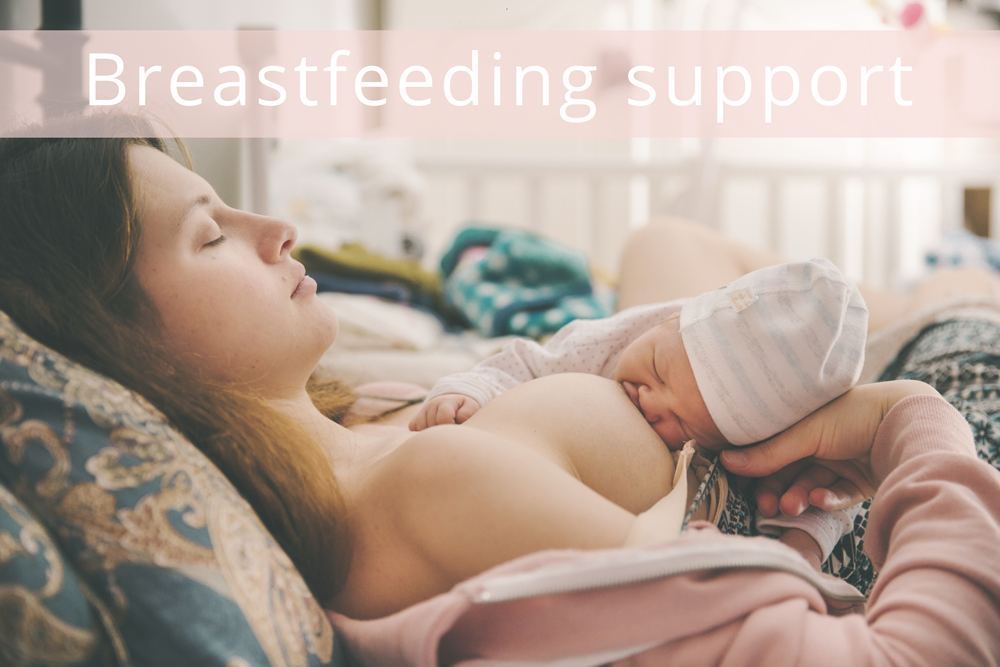
Baby-friendly accredited?
The hospital is not accredited under the global Baby Friendly Health Initiative program.
St John of God Geelong Hospital Statistics
PBB is unable to find separate statistics for individual hospitals in Victoria. The following statistics are from Victoria as a whole.
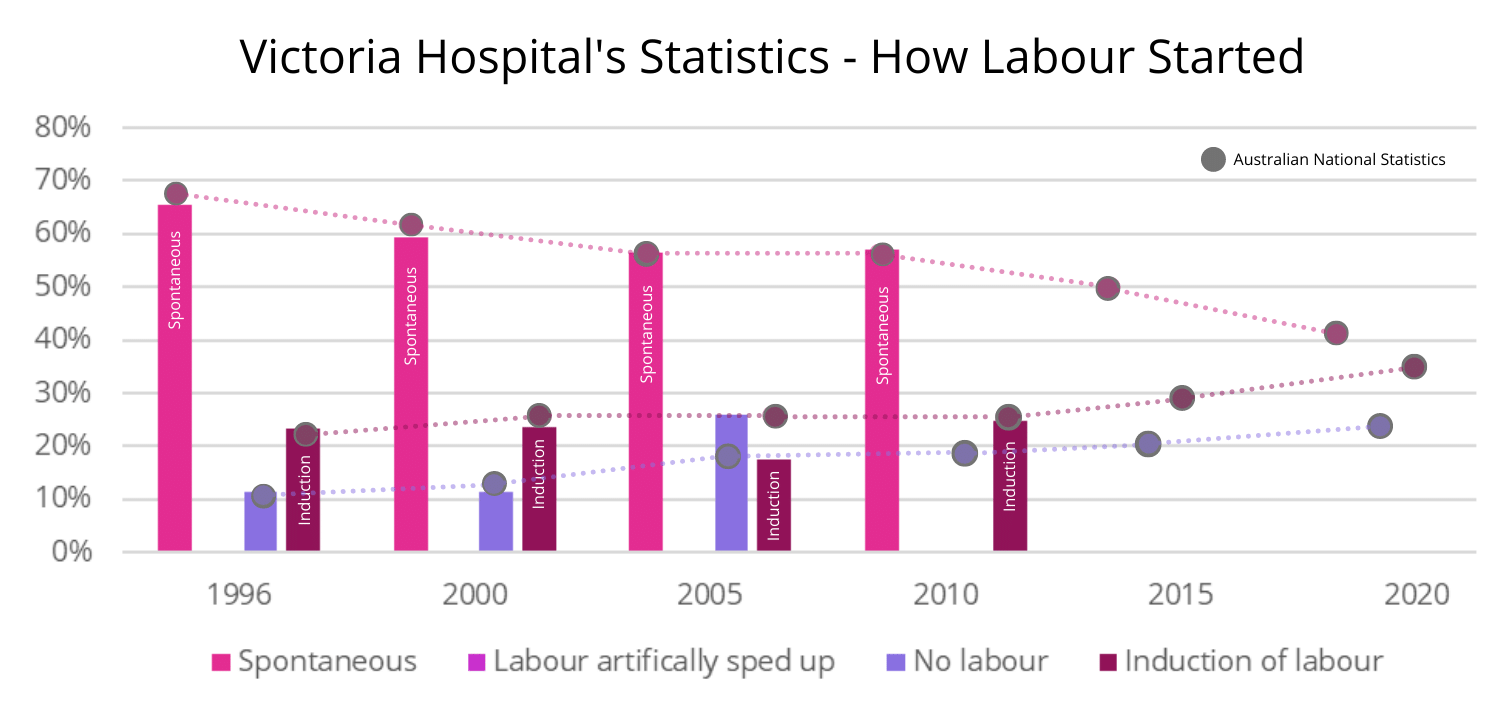
How a woman’s labour starts influences the chance interventions in labour. If labour starts spontaneously, there is less likelihood of interventions. In addition, if a woman has an induction of labour there is an increased chance of further interventions. In the above graph, spontaneous labour refers to labour that starts on its own. Furthermore, please note that Victoria’s statistics did not tell us if spontaneous labour is artificially sped up with medication or breaking of the bag of water. Therefore, this graph’s spontaneous labour includes labours sped up by medical intervention.
Induction of labour in PBB’s graph refers to one or more of the following interventions used to start labour:
- Artificial rupture of membranes
- Balloon catheter to open the cervix
- Prostaglandins placed in the vagina
- Synthetic oxytocin drug to start or speed up labour
No labour is when a woman has an elective (non-emergency) caesarean before labour starts.
There’s no available data on How Labour Started in 2015 and 2020. Please contact us if you have access to the statistics for the missing years.
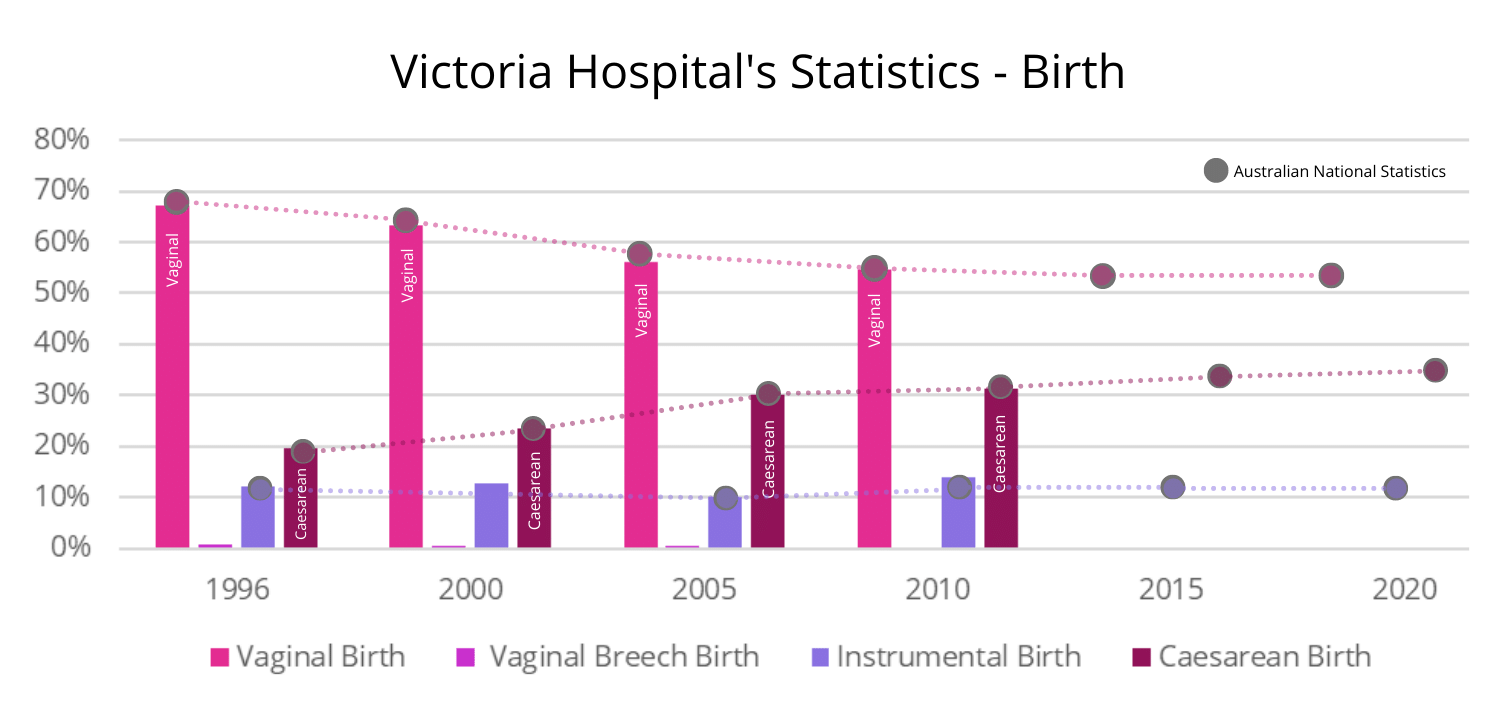
Since 1985, the World Health Organization (WHO) has recommended countries keep the caesarean birth rate between 10–15% to ensure mortality rates are kept low for mothers and babies (WHO’s last statement update was April 2015). Since 1995 the cesarean birth rate has increased every year across Australia. In 2010 the Cesarean birth rate in Victoria was more than double the WHO recommendation.
A small number of breech babies are born vaginally. Instrumental births include forceps birth and vacuum extraction. The caesarean birth rate includes both elective (planned) and emergency (unplanned) caesarean births.
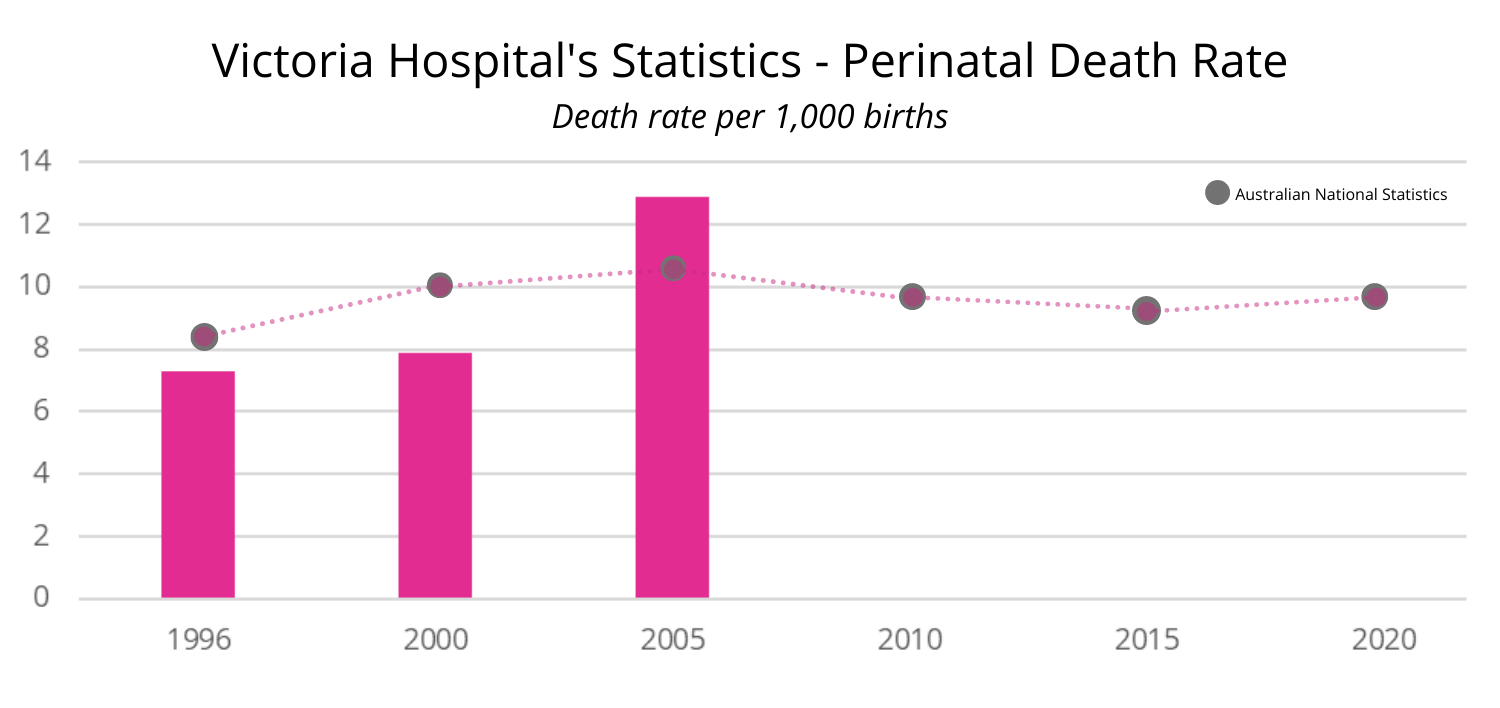
Please note that even though there is a dramatic increase in interventions in labour and caesarean birth – there is no change in the perinatal death rate.
PBB attained the data in the statistics from the Australian Institute of Health and Welfare (AIHW).
Photo Gallery
PBB has created this page to help you be informed about local maternity services. We’d love for you to send us photos of the hospital to include on this page. Send photos to our webmaster.
Date page published 2nd December 2024


Leave A Comment